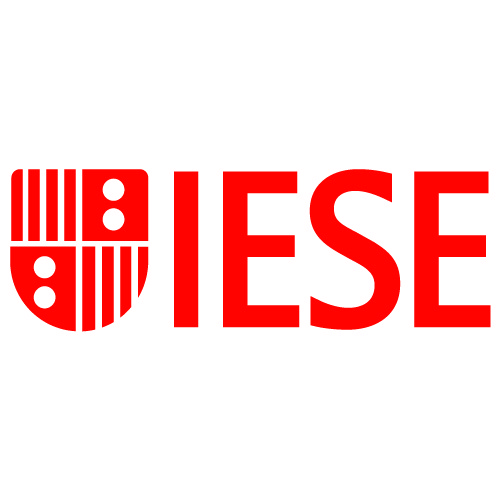The Power of Partnerships: Universities and Venture Capital Firms
May 9, 2024
Interviewed by Nicolas Sauvage on August 6th, 2020
A dynamic partnership between universities and venture capital firms has emerged, highlighting the synergies teamwork can bring to the ecosystem. Victoria Slivkoff, global head of innovation and entrepreneurship at the University of California Office of the President, joined Corporate Venturing Insider to discuss this meaningful collaboration.
The UC system is the largest public research university system in the United States, uniting a vast and rich innovation ecosystem across 10 campuses, five medical centers, three national laboratories, four institutes for science and innovation, and a statewide agriculture and natural resources division. The UC system is also the largest recipient of federal research funding and conducts nearly 10% of all academic research in the country.
Preparing for the Role
Victoria brings more than three years of experience working directly with universities and VC firms. She has a broad background in operations strategy and financial management. Her last assignment was working in a cleantech venture arm, and she has experience leading corporate development and investor relations for a solar company. And she’s a startup co-founder.
“I didn’t follow a linear path,” she said. “But the ability to wear many hats and deliver on a strategic operational and relationship level prepared me for this role at UC, where we want to transform the UC’s intellectual and innovation capital through internal coordination and external partnerships with corporates, investors, government, and foundations,” she said.
Function and Aims
The UC Office of the President serves six key functional areas aimed at enabling this transformation:
- Increasing system-wide coordination
- Securing funding
- Creating easier pathways to work with external partners
- Mapping where innovation and startup activities lie
- Supporting faculty, student, and alumni entrepreneurs
- Promoting UC’s impact.
In the last decade, companies increasingly have looked toward universities as sources of innovation and entrepreneurship, leading to an explosion in university-industry partnerships. UC’s labs serve as the R&D arms of the industry, and UC’s incubators and accelerators facilitate deal flow to VCs and CVCs. UC has also established industry-engagement programs and innovation hubs as it continues to see more industry partnerships through these multi-campus initiatives.
“We’re being very intentional about working with the community, aligning our objectives, bringing this greater prosperity, and democratizing opportunities,” Victoria said.
UC can pull several levers to create long-term sustainable collaboration models with its external partners, including physical proximity to Silicon Valley, institutional-level relationships, diversity elevation, and workforce development. Their geographically diverse campus locations, populations, sizes, and specialties infuse each campus with something unique to offer investors and entrepreneurs. Victoria’s office is a conduit to match investors and donors to UC startups and innovators.
Proof of Concept
Victoria discussed the UC’s proof-of-concept’s 14X return on investment in just two years. She explained that the assessment of which startup will have the biggest multiplier effect is made at a campus level and depends on the colleagues running the incubator accelerator and campus projects.
“The thinking behind this new POC fund is threefold,” Victoria explained. “De-risking technology so that the companies or technology are more investor-ready, working with industry to actively create companies based on our limited partnerships, and supporting research translation.”
Operating out of an office at the UC system headquarters enables participation in every technology vertical at every stage of development. However, she also acknowledged the need for ecosystem mapping, which can identify the source of innovation assets, be they startups, founders, researchers, IPs, or resources. The aim is to create a map that will help identify these assets and create a pathway for engagement between corporate VCs and universities.
The UC system is a powerhouse of innovation, and it’s promising to see what other universities will follow in their footsteps and continue to bring our community closer even further.
Disruption as Opportunity
Just over a year before the interview, Victoria’s unit underwent a leadership transition. She was tasked with auditing the workflow and designing a plan for a new strategic roadmap. As a startup itself — the office was less than three years old at the time — it needed direction.
“I had to quickly put together that plan, deploy it, and start launching monthly calls to convene this innovation entrepreneurship community moving forward so we could share best practices and opportunities,” she explained. “It’s challenging to navigate through these relationships and different layers of governance and then try to come up with a model that everybody can align to.”
She said transition involves more than moving from Point A right to Point B.
We really have to look at the efficiencies,” she continued. “In the context of corporate relationship, that means coming together with a mutual understanding of the expectations. You have to have the infrastructure in place so these relationships can be built.”
She cited UC’s four institutes for science and technology, which were established as multi-campus entities, specifically to work with the government in industries tackling grand challenges.
“A final challenge requires collaboration to remove barriers to innovation by standardizing aspects of licensee agreements and workflows, raising capital at all stages of development, and recruiting people willing to work with entrepreneurs to help them be successful.”

 Successful collaborations are built on shared values, mutual goals, strategic planning, and support for startups at various stages of development, leveraging not just funding but also mentorship, customer partnerships, and access to R&D resources.
Successful collaborations are built on shared values, mutual goals, strategic planning, and support for startups at various stages of development, leveraging not just funding but also mentorship, customer partnerships, and access to R&D resources. 



















